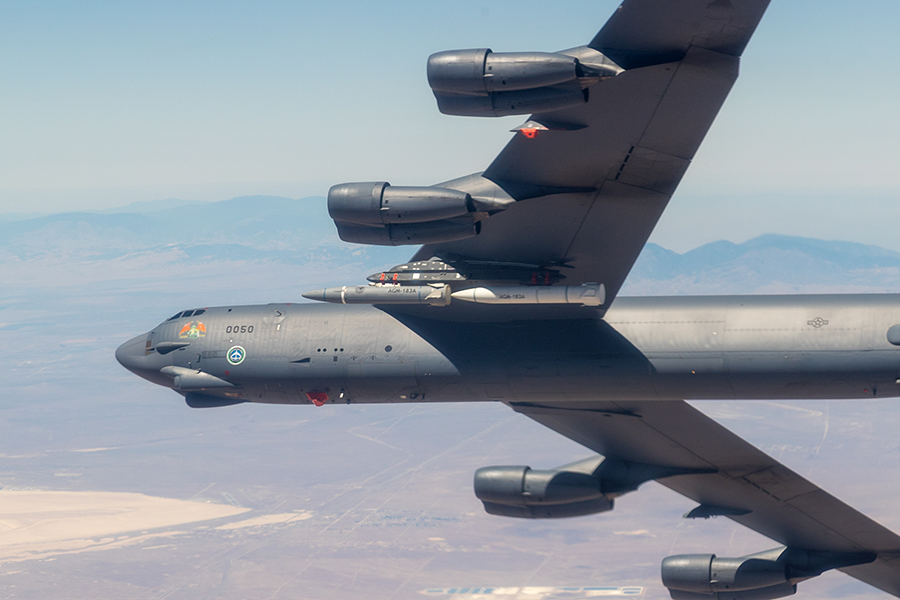"[Arms Control Today] has become indispensable! I think it is the combination of the critical period we are in and the quality of the product. I found myself reading the May issue from cover to cover."
Test Failures Put Hypersonic Program in Doubt
November 2023
By Shannon Bugos
Further recent testing disappointments with the U.S. Air Force hypersonic boost-glide vehicle likely have solidified the official end of the program in fiscal year 2024.
 The House and Senate versions of the 2024 National Defense Authorization Act zero out the Biden administration’s request of $150 million for continued research and development of the Air-Launched Rapid Response Weapon (ARRW) system.
The House and Senate versions of the 2024 National Defense Authorization Act zero out the Biden administration’s request of $150 million for continued research and development of the Air-Launched Rapid Response Weapon (ARRW) system.
Senate Armed Services Committee budget documents state that, “in light of testing failures and statements from Air Force leadership in support of the competitor program, the committee is concerned that continued testing at the scale originally planned in the budget request seems unlikely to deliver persuasive results.”
The Air Force intended to begin procuring the weapon in 2023, but the program’s lackluster testing record in 2021 prompted the service to delay procurement. (See ACT, May 2023.)
On Aug. 19, the Pentagon conducted a test release of an all-up-round ARRW prototype missile from a B-52H bomber off the coast of southern California, but did not specify whether the test proved successful. After an ARRW system flight test in March, the Air Force did not detail its outcome until weeks later, when the service admitted it was unsuccessful.
“This test acquired valuable, unique data and was intended to further a range of programs,” such as the ARRW and Hypersonic Attack Cruise Missile systems, said an Air Force spokesperson after the August test, referring to the service’s other hypersonic weapons program. The Army planned to field the ARRW system by the end of September, but now aims to deploy it by the end of the calendar year, which defense experts view as still unlikely.
Meanwhile, the Air Force conducted a “hypersonic weapon familiarization training” at Edwards Air Force Base in California on Sept. 28 in an effort to prepare multiple crews on “the fundamentals of hypersonics, operational and logistics considerations, and in-depth tactical discussions,” according to a statement.
The Pentagon’s hypersonic weapons effort stumbled again with the second cancellation this year of a scheduled test of the Army’s Long-Range Hypersonic Weapon (LRHW) system “as a result of pre-flight checks” on Sept. 6 at Cape Canaveral Space Force Station in Florida.
The LRHW program shares the same hypersonic boost-glide vehicle as the Navy’s hypersonic weapons program, the Conventional Prompt Strike (CPS) missile, which will be deployed on Zumwalt-class stealth destroyers and Virginia-class submarines.
The USS Zumwalt arrived in Mississippi on Aug. 19 to begin a two-year installation process for four CPS launch tubes, each of which can hold three missiles. The Navy aims to deploy the CPS system on the destroyer in 2025.
The string of failures and delays across the Pentagon’s various conventional-only hypersonic programs highlights the disorganization of the effort, which was founded largely to keep pace with Chinese and Russian hypersonic programs. Beijing and Moscow have both conventional and nuclear hypersonic programs.
“There wasn’t a strategy during my time at the Pentagon,” Will Roper, the former Air Force acquisition chief, told The Wall Street Journal in September. “And from what I can see from the outside, there doesn’t appear to be one now.”
